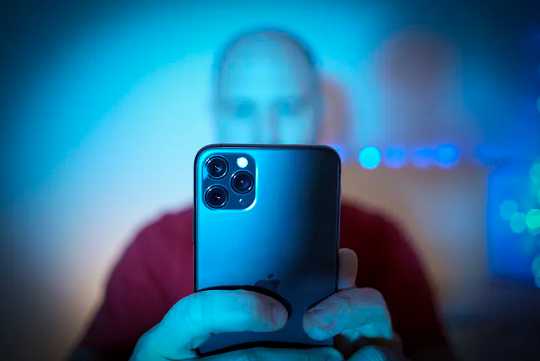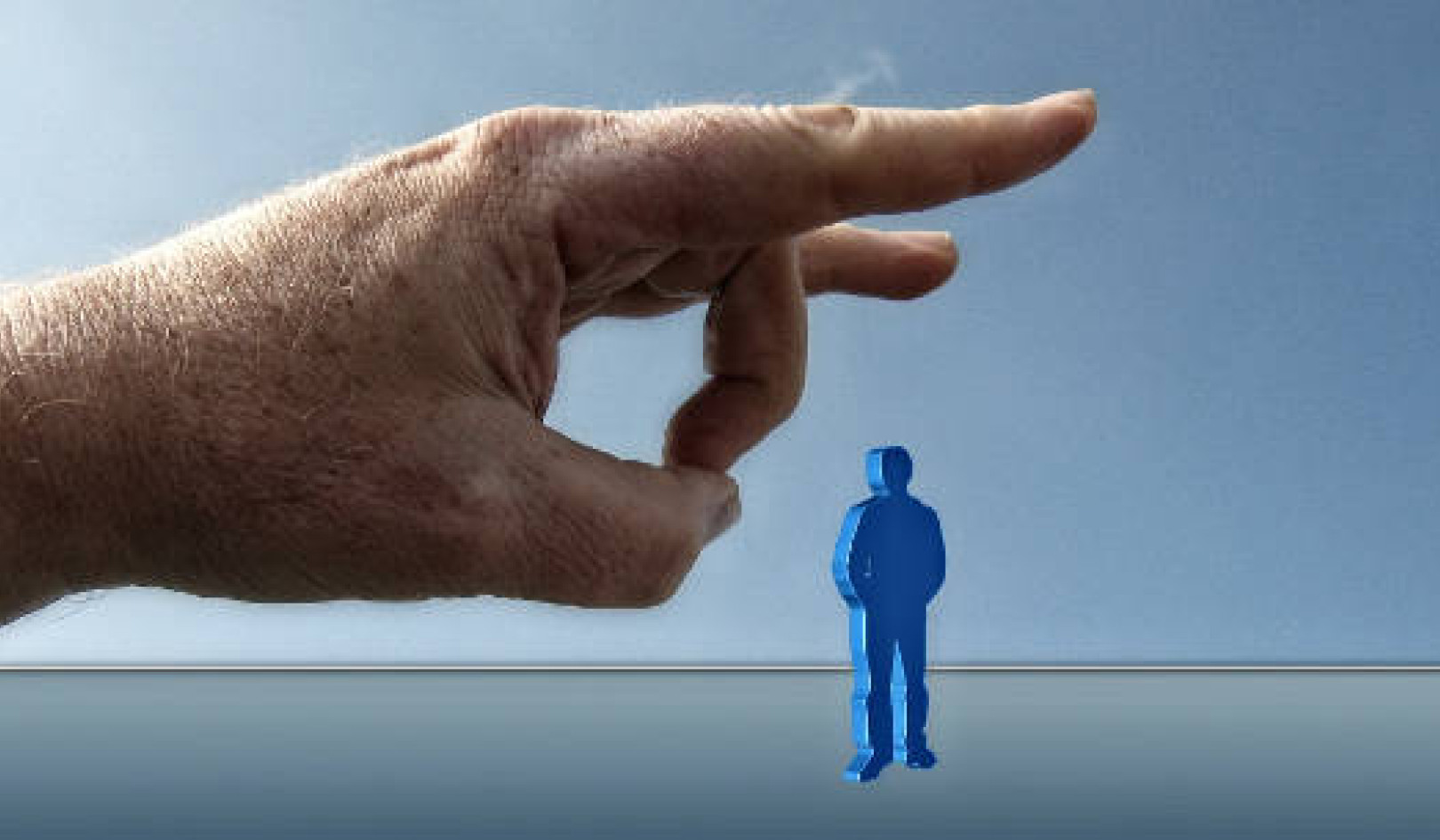 Frequent social media use does not necessarily equate to addiction. Jaap Arriens/NurPhoto via Getty Images
Frequent social media use does not necessarily equate to addiction. Jaap Arriens/NurPhoto via Getty Images
Imagine that you’re a typical middle school student having dinner with your family. Your mother takes your smartphone away and puts it in a lock-box that won’t open for an hour.
Would you: (a) go ahead and eat dinner with your family? (b) try to pry open the box? or (c) smash the box with a heavy tool when your family is sufficiently distracted?
As depicted in Netflix’s popular documentary, “The Social Dilemma,” the answer is first (b) – if that doesn’t work, then (c). Apparently, for youth, being connected online is akin to an addictive substance: “There are only two industries that call their customers ‘users’: illegal drugs and software,” as information design expert Edward Tufte has put it.
Popular media fuels this portrait, with testimonials from extreme users and highlights of their behavior. So-called addicts who changed their lives through digital detox confess that social media was killing them. The health care industry has capitalized on this digital detox trend, depicting extreme use as the norm. Scholars, too, debate ways to define and prevent addiction to digital media.
It’s a mistake, however, to equate frequent social media use with addiction. Just the label carries stigma – a personal failing or pathology that has significant negative outcomes to the user and their family, such as lost jobs and destroyed relationships.
As researchers who study habits and social media use, we have found that excessive social media use can be a very strong habit. But that doesn’t make it an addiction.
 Lee Jung-soo plays guitar and sings a song from her laptop during her three weeks of mandatory quarantine inside a hotel room in Hong Kong. Social media has helped millions stay connected during the coronavirus era. Anthony Wallace/AFP via Getty Images
Lee Jung-soo plays guitar and sings a song from her laptop during her three weeks of mandatory quarantine inside a hotel room in Hong Kong. Social media has helped millions stay connected during the coronavirus era. Anthony Wallace/AFP via Getty Images
The upside of social media
Unlike addiction, frequent social media users sometimes benefit and sometimes suffer. That’s why a more accurate description is “habit.”
Habits form naturally through repeated use. Use any site or app enough, and you’ll form associations in memory between cues, such as site alerts and your smartphone, and responses, such as logging on. Once habits have formed, perception of cues automatically makes you think of logging on.
Creating user habits is central to the business of social media platforms like Facebook, TikTok and Twitter. Their revenue rises from high-frequency users. Lots of infrequent users either have no effect on revenue or are a drag on the bottom line. User habits are integral to the success and design of social media platforms.
Most of us start using social media because it is rewarding. The likes, follows and friends we accumulate are all rewards. Take Instagram: Almost 70% of user postings can be explained by a reward-learning model in which likes are analogous to the food pellets that teach rats to pull a lever in a Skinner box. Get enough likes on your posts, and you will start to post more often and create an Instagram posting habit.
I know what they mean when they say tiktok is like crack, just had a 3 hour session pic.twitter.com/N5LKKm9pzS
— Shaggy Longlegs (@kylegrocock1) January 29, 2021
How platforms design around habits
Social media platforms have figured out how to make pallid online rewards as real to humans as food pellets are to rats. Likes and followers gain fuel when they become public. Users then engage in social comparisons, feeling good when they gain social recognition and bad when others’ accomplishments diminish their own. Social pressure is part of the experience.
Even more rewards come from the algorithms that curate our social media sites to appeal to our personal interests. This is the source of echo chambers, creating a cheering crowd for most everyone.
Habits also explain the design of successful platform features. Consider the endless scroll. It effectively removes points that might signal you to stop reading. Just as important, it presents each post in a sequence, which heightens your experience of rewards (amazing cat video!) interspersed with the ho-hum. Such intermittent rewards are especially effective at building habits.
Once habits have formed, recurring cues – like notifications and the usual places and times that we use the app – trigger social media use. If you repeatedly scroll your Twitter feed while riding the bus, for example, then you may find that your Twitter habit is activated merely by sitting down on the seat.
Habits function largely outside of our conscious awareness and your intentions. But once in a while, you come up against your habits and realize they are there. Frequent social media users might experience habits like this during a phishing attack. Frequent users should be most knowledgeable about security risks and how to avoid them, but acting habitually and responding without thinking made these users vulnerable to responding automatically to phishing attacks. These moments allow us to “see” our habits up close.
A more empowering narrative for social media users
Habits also explain why the addiction model, though inaccurate, is pervasive. Habits keep people automatically using social media even when intending to do otherwise. When users find it hard to quit, they may feel addicted. Users adopt narratives validating feelings of addiction and share these widely. However, these narratives actually disempower users. They inhibit our understanding of how to stop or control social media use.
Understanding habits allows us to reverse engineer our way out of social media’s behavioral traps. In other words, we can change the cues that activate our habits. Without those cues, habits are simply not activated. But cues that trigger habits are also their Achilles’ heel.
Consider the findings from our analysis of more than 9,000 Facebook users. After a change in site design, those with strong habits immediately reduced their posting rates. The changes in platform cues appeared to disrupt habitual users. They didn’t show the cravings you’d expect with addiction. They just used it less. In contrast, the design change – which was implemented to increase posting – did just that for occasional users.
You can take advantage of this Achilles’ heel yourself. Try modifying or eliminating cues from your smartphone and apps, including turning the phone screen face down, putting it on airplane mode or turning off notifications.
It can also help to add friction so that you have to think before you log on. Students in a recent study were able to decrease social media use by simply putting their phone charger farther away or making their phone less accessible by putting it in their purse rather than pants pocket.
So, that hated lock-box for smartphones during family dinners might actually work.
By understanding habits, we all can stop worrying about digital detox and start reengineering apps and websites to meet our own needs as opposed to the sites’ needs – which is to build a habitual user base. And we can get on with ameliorating the real challenges of social media: misinformation, biased algorithms and the destructions they create.
About The Author
Ian A. Anderson, Ph.D. Student, USC Dornsife College of Letters, Arts and Sciences and Wendy Wood, Provost Professor of Psychology and Business, USC Dornsife College of Letters, Arts and Sciences
This article is republished from The Conversation under a Creative Commons license. Read the original article.

Related Books:
Atomic Habits: An Easy & Proven Way to Build Good Habits & Break Bad Ones
by James Clear
Atomic Habits provides practical advice for developing good habits and breaking bad ones, based on scientific research on behavior change.
Click for more info or to order
The Four Tendencies: The Indispensable Personality Profiles That Reveal How to Make Your Life Better (and Other People's Lives Better, Too)
by Gretchen Rubin
The Four Tendencies identifies four personality types and explains how understanding your own tendencies can help you improve your relationships, work habits, and overall happiness.
Click for more info or to order
Think Again: The Power of Knowing What You Don't Know
by Adam Grant
Think Again explores how people can change their minds and attitudes, and offers strategies for improving critical thinking and decision making.
Click for more info or to order
The Body Keeps the Score: Brain, Mind, and Body in the Healing of Trauma
by Bessel van der Kolk
The Body Keeps the Score discusses the connection between trauma and physical health, and offers insights into how trauma can be treated and healed.
Click for more info or to order
The Psychology of Money: Timeless lessons on wealth, greed, and happiness
by Morgan Housel
The Psychology of Money examines the ways in which our attitudes and behaviors around money can shape our financial success and overall well-being.
























